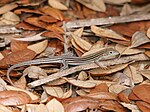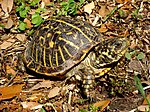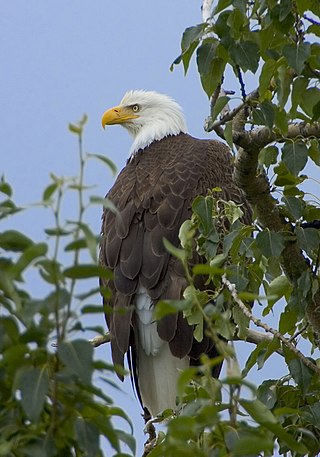Snakes
Twenty-one species of snake live in Wisconsin.
| Common name | Scientific name | IUCN status | Wisconsin status | Picture |
|---|---|---|---|---|
| Butler's garter snake | Thamnophis butleri | Least concern | Special concern |  |
| Common garter snake | Thamnophis sirtalis | Least concern | Common | 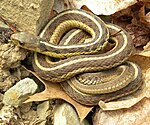 |
| Common watersnake | Nerodia sipedon | Least concern | Common | 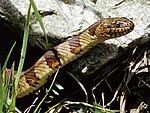 |
| DeKay's brown snake | Storeria dekayi | Least concern | Common | 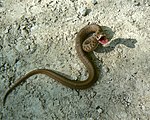 |
| Eastern foxsnake | Pantherophis vulpinus | Least concern | Common |  |
| Eastern hognose snake | Heterodon platirhinos | Least concern | Common |  |
| Eastern massasauga | Sistrurus catenatus | Least concern | Endangered |  |
| Eastern racer | Coluber constrictor | Least concern | Special concern |  |
| Eastern ribbon snake | Thamnophis saurita | Least concern | Endangered |  |
| Gophersnake | Pituophis catenifer | Least concern | Special concern |  |
| Gray ratsnake | Pantherophis spiloides | Least concern | Special concern |  |
| Lined snake | Tropidoclonion lineatum | Least concern | Special concern |  |
| Milk snake | Lampropeltis triangulum | Least concern | Common | 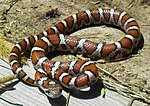 |
| Plains garter snake | Thamnophis radix | Least concern | Special concern |  |
| Queen snake | Regina septemvittata | Least concern | Endangered |  |
| Red-bellied snake | Storeria occipitomaculata | Least concern | Common | 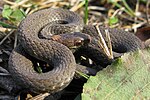 |
| Ring-necked snake | Diadophis punctatus | Least concern | Common (northern) Special concern (prairie) |  |
| Smooth green snake | Opheodrys vernalis | Least concern | Common |  |
| Timber rattlesnake | Crotalus horridus | Least concern | Special concern |  |
| Western ribbon snake | Thamnophis proximus | Least concern | Endangered |  |
| Western worm snake | Carphophis vermis | Least concern | Special concern |  |


